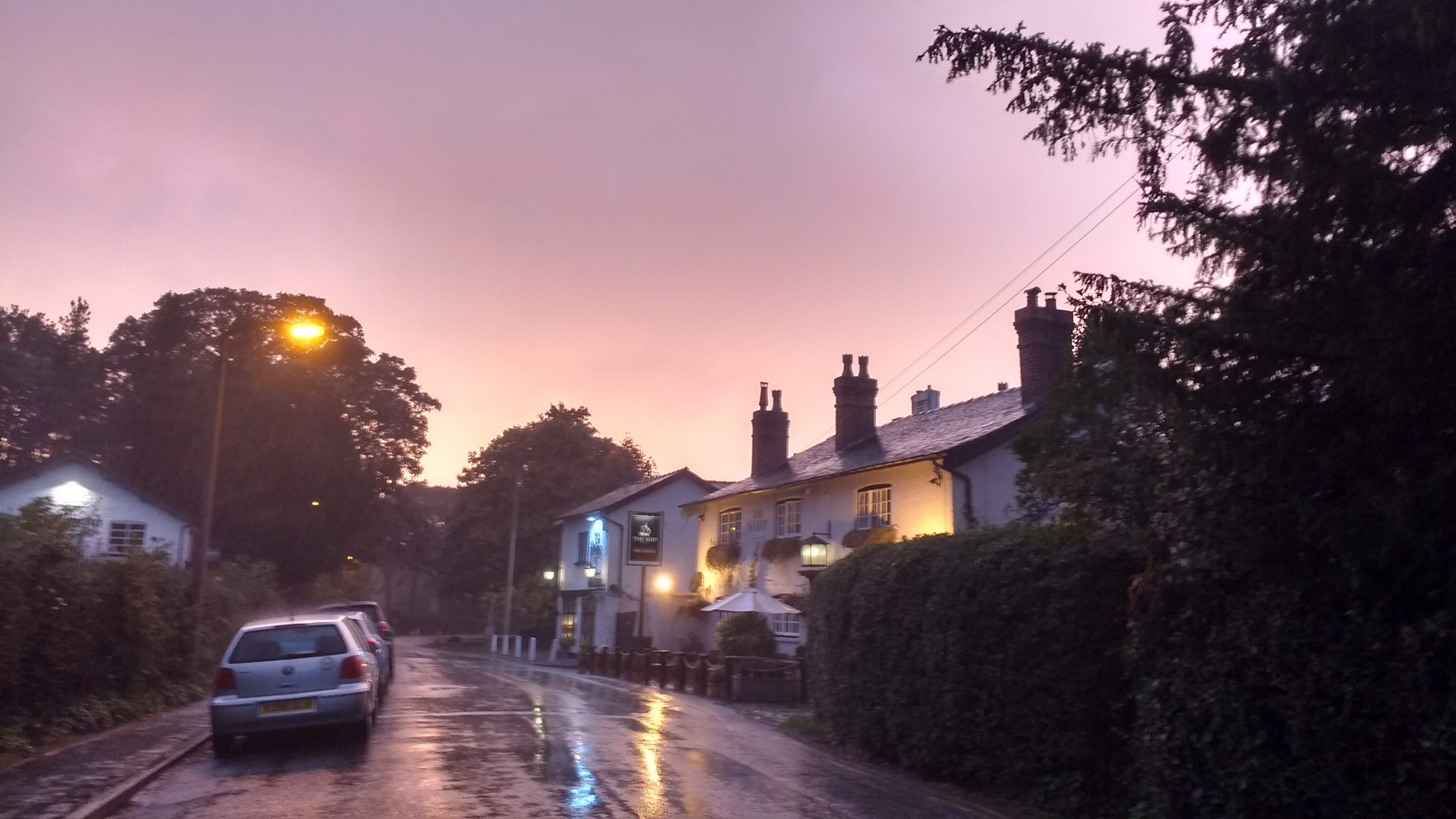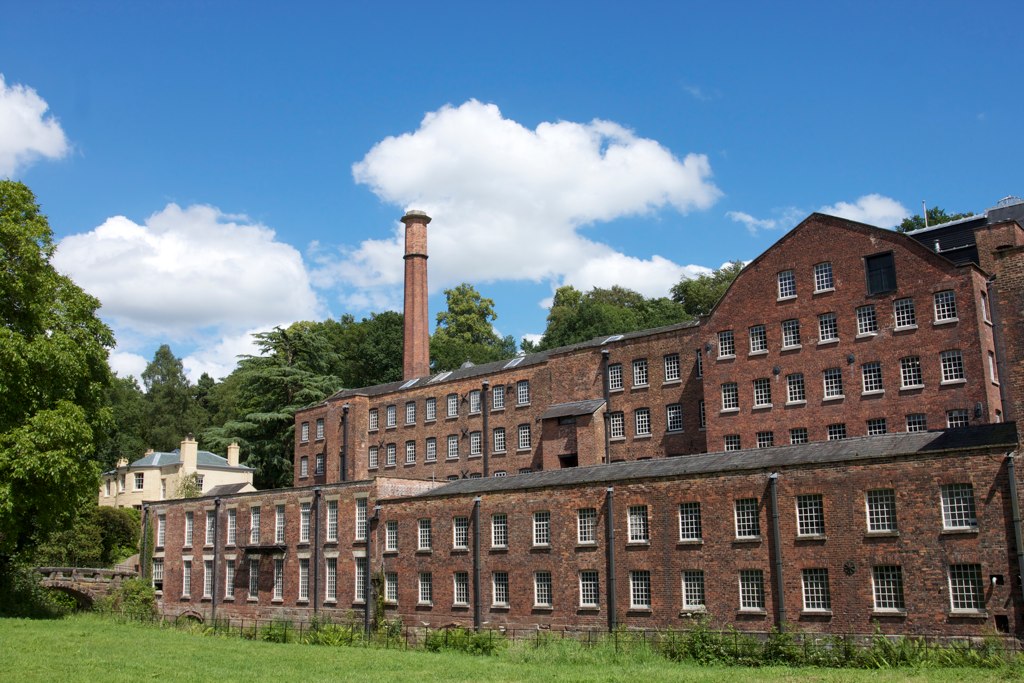Styal, Cheshire on:
[Wikipedia]
[Google]
[Amazon]
Styal (, like ''style'') is a village and civil parish on the River Bollin near



 Quarry Bank Mill and its village still stand today; the mill ceased operation as a working factory in 1959 and is now owned by
Quarry Bank Mill and its village still stand today; the mill ceased operation as a working factory in 1959 and is now owned by
Quarry Bank Mill & Styal EstateStyal Station Promotion Website
{{authority control Villages in Cheshire
Wilmslow
Wilmslow ( ) is a market town and civil parish in the unitary authority of Cheshire East in Cheshire, England, south of Manchester city centre. The population was 24,497 at the 2011 Census.
History
Toponymy
Wilmslow derives its name from O ...
, Cheshire
Cheshire ( ) is a ceremonial and historic county in North West England, bordered by Wales to the west, Merseyside and Greater Manchester to the north, Derbyshire to the east, and Staffordshire and Shropshire to the south. Cheshire's coun ...
, England.
History
Styal village grew during the early years of theIndustrial Revolution
The Industrial Revolution was the transition to new manufacturing processes in Great Britain, continental Europe, and the United States, that occurred during the period from around 1760 to about 1820–1840. This transition included going f ...
when industrialist Samuel Greg built a cotton mill
A cotton mill is a building that houses spinning (textiles), spinning or weaving machinery for the production of yarn or cloth from cotton, an important product during the Industrial Revolution in the development of the factory system.
Althou ...
and textile factory, Quarry Bank Mill
Quarry Bank Mill (also known as Styal Mill) in Styal, Cheshire, England, is one of the best preserved textile factories of the Industrial Revolution. Built in 1784, the cotton mill is recorded in the National Heritage List for England as a d ...
. The mill was situated on the bank of the River Bollin in order to use the water current to power the waterwheels. By the 1820s, the mill was expanding, and because of its rural location, Greg found the need to construct a new model village
A model village is a type of mostly self-contained community, built from the late 18th century onwards by landowners and business magnates to house their workers. Although the villages are located close to the workplace, they are generally phys ...
nearby to provide housing for his workers.
Samuel Greg died in 1834 and Quarry Bank Mill was taken over by his son, Robert Hyde Greg, who remained in charge for nearly 40 years and introduced a number of technological innovations. Ownership of the mill subsequently passed through several generations of the Greg Family.
In 1898 the Styal Cottage Homes were opened to house destitute children from the Manchester area.
Landmarks



 Quarry Bank Mill and its village still stand today; the mill ceased operation as a working factory in 1959 and is now owned by
Quarry Bank Mill and its village still stand today; the mill ceased operation as a working factory in 1959 and is now owned by National Trust
The National Trust, formally the National Trust for Places of Historic Interest or Natural Beauty, is a charity and membership organisation for heritage conservation in England, Wales and Northern Ireland. In Scotland, there is a separate and ...
, who operate it as an industrial heritage museum.
The mill and its surrounding buildings are recorded in the National Heritage List for England
The National Heritage List for England (NHLE) is England's official database of protected heritage assets. It includes details of all English listed buildings, scheduled monuments, register of historic parks and gardens, protected shipwrecks, a ...
as a designated Grade II* listed building
In the United Kingdom, a listed building or listed structure is one that has been placed on one of the four statutory lists maintained by Historic England in England, Historic Environment Scotland in Scotland, in Wales, and the Northern I ...
.
Quarry Bank Mill has been recognised internationally as a significant industrial heritage
Industrial heritage refers to the physical remains of the history of technology and industry, such as manufacturing and mining sites, as well as power and transportation infrastructure. Another definition expands this scope so that the term a ...
site and has been included on the European Route of Industrial Heritage
The European Route of Industrial Heritage (ERIH) is a tourist route of the most important industrial heritage sites in Europe. This is a tourism industry information initiative to present a network of industrial heritage sites across Europe. The ...
by the European Union
The European Union (EU) is a supranational political and economic union of member states that are located primarily in Europe. The union has a total area of and an estimated total population of about 447million. The EU has often been ...
's Creative Europe
Creative Europe is a European Union programme for the cultural and creative sectors. In its first phase, going from 2014 to 2020, it had a budget of € 1.47 billion, which were expanded to € 2.44 billion in its second phase (2021-2027).
His ...
programme, which records the mill with Styal village as "the most complete and least altered factory colony of the Industrial Revolution. It is of outstanding national and international importance".
Norcliffe Chapel, a small Grade II-listed Unitarian
Unitarian or Unitarianism may refer to:
Christian and Christian-derived theologies
A Unitarian is a follower of, or a member of an organisation that follows, any of several theologies referred to as Unitarianism:
* Unitarianism (1565–present ...
chapel, stands close to the mill village. It was built in 1822–23 to provide a place of worship for the mill workers and is now in the ownership of the National Trust. It was originally established as a Baptist
Baptists form a major branch of Protestantism distinguished by baptizing professing Christianity, Christian believers only (believer's baptism), and doing so by complete Immersion baptism, immersion. Baptist churches also generally subscribe ...
chapel, but was changed to a Unitarian church by Samuel Greg, himself a Unitarian, in 1833.
The Greg family were influential landowners in the area, and in 1831, Robert Hyde Greg commissioned the construction of a large new home, Norcliffe Hall, to the west of the village. Today, the Grade II-listed building is occupied by private flats.
Near to Norcliffe chapel stands the Grade II-listed Styal Cross, a wayside cross of medieval origin. The cross had originally stood at Cross Farm. In 1860 it was relocated by the son of Samuel Greg, Robert Hyde Greg, to Holly Lane. In 1980, it was demolished by a car crash. The remains of the lower part were rebuilt on the lane close to Styal Village in 1983, and after a fundraising campaign, a replacement stone column and cross were added to the medieval base in 2010.
The state primary school is on the Styal National Trust estate.
Today the former buildings of the Styal Cottage Homes (which closed in 1956) are occupied by the HMP Styal women's prison
A prison, also known as a jail, gaol (dated, standard English, Australian, and historically in Canada), penitentiary (American English and Canadian English), detention center (or detention centre outside the US), correction center, correc ...
, which opened in 1962.
Demography
Population
The population in the 2001 Census was 5,014, including the nearby smaller village ofMorley Morley may refer to:
Places England
* Morley, Norfolk, a civil parish
* Morley, Derbyshire, a civil parish
* Morley, Cheshire, a village
* Morley, County Durham, a village
* Morley, West Yorkshire, a suburban town of Leeds and civil parish
* ...
and part of the fringe of Wilmslow. The population for the civil parish according to the 2011 Census was 1,051.
According to 2001 Census data, the Morley and Styal Ward has a population of 5014, of which 2722 (54.3%) are females and 2292 (45.7%) are males. 949 people (18.93%) are aged 16 and under, and 969 people (19.33%) are aged 65 and over.
Ethnicity
Ethnic white groups (British, Irish, other) account for 96.19% (4823 people) of the population, with 3.81% (190 people) being in ethnic groups other than white. Of the 3.81% (190 people) in non-white ethnic groups: *53 (27.89%) belonged to mixed ethnic groups *67 (35.26%) were Asian or Asian British *25 (13.16%) were Black or Black British *45 (23.64%) were Chinese or Other Ethnic GroupsReligion
A breakdown of religious groups and denominations: *Christian – 76.31% (3826 people) *Buddhist – 0.24% (12 people) *Hindu – 0.50% (25 people) *Jewish – 0.76% (38 people) *Muslim – 1.18% (59 people) *Sikh – 0.18% (9 people) *Sivesh – 0.02% (1 person) *Other religions – 0.26% (13 people) *No religion – 13.82% (693 people) *Religion not stated – 6.76% (339 people)Transport
Styal is a commuter village, with transport access toManchester
Manchester () is a city in Greater Manchester, England. It had a population of 552,000 in 2021. It is bordered by the Cheshire Plain to the south, the Pennines to the north and east, and the neighbouring city of City of Salford, Salford to ...
. Styal railway station is on the line linking , and . The line opened on 1 May 1909. The station is currently served by one train an hour in each direction to and Wilmslow or Crewe; this had previously been limited to eight trains a day. A campaign was launched in 2008 to lobby for more services. Sunday services every two hours were launched in May 2009 to coincide with the line's centenary.
Notable people
*Tyson Fury
Tyson Luke Fury (born 12 August 1988) is an English professional boxer. He is a two-time world heavyweight champion, having held the WBC title since defeating Deontay Wilder in 2020, and '' The Ring'' magazine title from 2020 to August 2022; ...
(born 1988), professional boxer. Grew up in Styal.
* Terry Waite
Terence Hardy Waite (born 31 May 1939) is an English humanitarian and author.
Waite was the Assistant for Anglican Communion Affairs for the then Archbishop of Canterbury, Robert Runcie, in the 1980s. As an envoy for the Church of England, h ...
(born 1939), humanitarian, author, and hostage negotiator. Grew up in Styal.
See also
* Listed buildings in Wilmslow * Styal Cottage HomesReferences
External links
Quarry Bank Mill & Styal Estate
{{authority control Villages in Cheshire